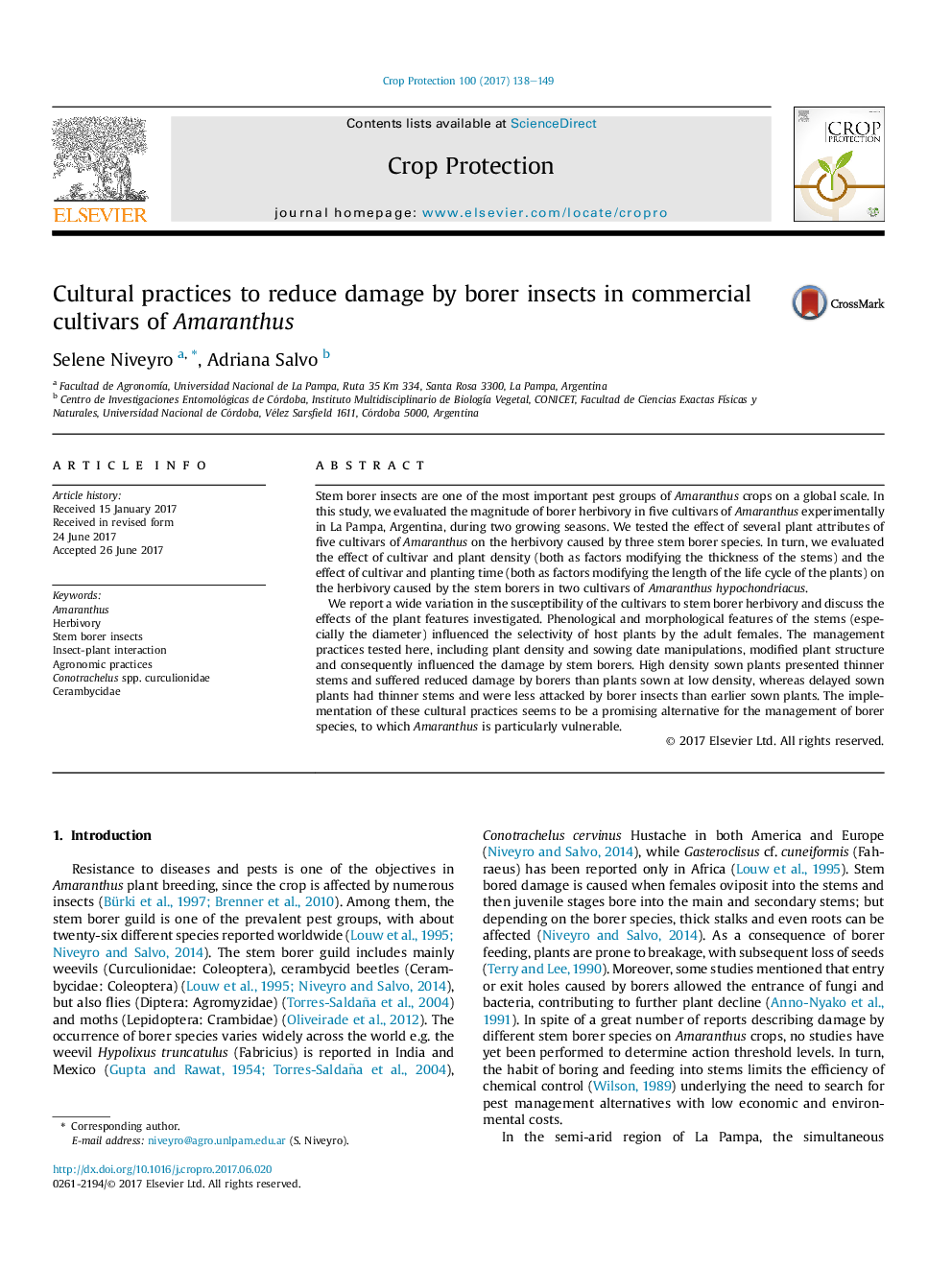| Article ID | Journal | Published Year | Pages | File Type |
|---|---|---|---|---|
| 5760822 | Crop Protection | 2017 | 12 Pages |
Abstract
We report a wide variation in the susceptibility of the cultivars to stem borer herbivory and discuss the effects of the plant features investigated. Phenological and morphological features of the stems (especially the diameter) influenced the selectivity of host plants by the adult females. The management practices tested here, including plant density and sowing date manipulations, modified plant structure and consequently influenced the damage by stem borers. High density sown plants presented thinner stems and suffered reduced damage by borers than plants sown at low density, whereas delayed sown plants had thinner stems and were less attacked by borer insects than earlier sown plants. The implementation of these cultural practices seems to be a promising alternative for the management of borer species, to which Amaranthus is particularly vulnerable.
Related Topics
Life Sciences
Agricultural and Biological Sciences
Agronomy and Crop Science
Authors
Selene Niveyro, Adriana Salvo,
